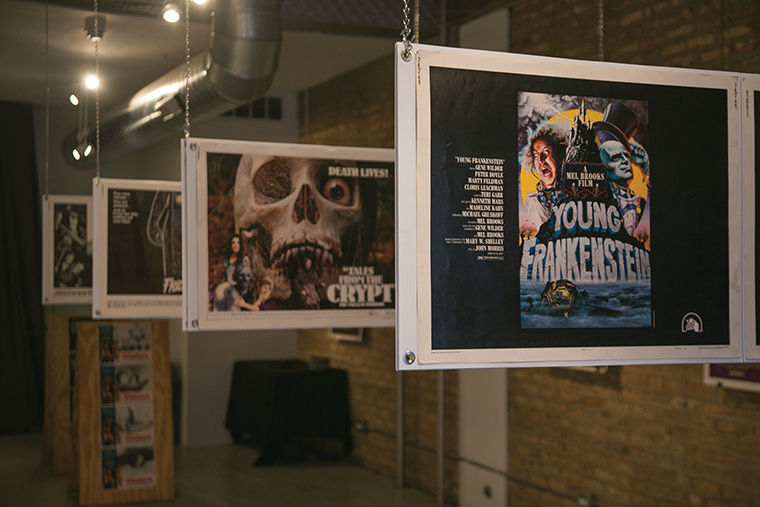Uncovered posters inspire spooky art show
October 6, 2014
The Logan Theatre—originally called the Paramount Theatre—opened in 1915 at 2646 N. Milwaukee Ave. and was recently revealed to be a treasure trove of old horror film posters.
The result is the “Horror Movie Poster” exhibit at the I Am Logan Square Gallery, 2644 N. Milwaukee Ave., opened Oct. 3 and features historic horror film posters that were uncovered three years ago in a hidden vault at the longtime Logan Square movie theater after the building underwent renovations, according to Jen Zacarias, director of operations at I Am Logan Square.
“During the renovation, there were a lot of nooks and crannies [exposed] in the theater,” Zacarias said. “One of them was this old vault that the theater used to keep film in. There were stacks and stacks of what we thought were frames for old photos, but it turned out to be old movie posters.”
After realizing what the theater employees had uncovered during the renovations, the theater, along with local art curators Lili Mugnier and Kat Seno, decided to do something special to honor the posters.
Seno said the exhibit is meant to celebrate horror film posters, which tends to be an often overlooked art form. She and Mugnier, who also work at the Art Institute of Chicago, already had a strong relationship with the gallery.
The exhibition focuses on horror film artwork from a specific time period–the ‘70s and ‘80s horror film era–according to Seno. Seno said the artwork from that time is distinctive in that the posters were more text-heavy as opposed to using images to tell a complete story.
“Posters have a long history of being a popular art that is meant to be disposable, yet today vintage poster artists like Toulouse Lautrec, [who] has a gallery here at the Art Institute,” Mugnier said. “There is something very distinct about poster artwork because it is meant to communicate a whole story through one image.”
Horror film posters have a long history in the film industry as well as the world of fine art, from iconic films like George A. Romero’s 1978 classic “Dawn of the Dead” and Sam Raimi’s 1981 “Evil Dead.”
The gallery showing at I Am Logan Square will be part of a month-long film series taking place at the Logan Theatre, Zacarias said. The film series will feature a different film every day, ranging from classics like “Evil Dead” to newer films such as “Coraline.”
Though horror films and television shows like “The Walking Dead” and “American Horror Story” are becoming part of mainstream popular culture, the horror genre tends to stray from the usual devices seen in popular media, according to Brendan Riley, an associate professor in the English Department who teaches the Zombies in Popular Media J-term course.
Riley said horror films differ from other films in that they try to evoke a stronger reaction out of the audience than more mainstream films.
“When you encounter other kinds of storytelling media, often you’re being engaged intellectually or emotionally, but very rarely are you being engaged on a visceral or instinctual level,” Riley said. “Most horror movies have at least some sort of engagement with the uncanny, or the fear of the unknown.”
Horror film enthusiasts, unlike casual television or movie fans, are more visible in terms of fanaticism because horror movie fans have to go out of their way to connect with each other over the genre, according to Riley.
“They don’t have conventions for people who like Monday night sitcoms,” Riley said. “It’s easy to find other people who like [sitcoms]. For people who enjoy strange Japanese horror movies, it’s harder to find those people. Part of the reason that those fan groups are more visible is that they need to be more visible in order to find other people who like the same things they like.”
According to Mugnier, the posters in the I Am Logan Square exhibit not only show the underappreciated art form of film poster art, but also showcase the history of the Logan Theatre. She said the posters are iconic and symbolic of that era of horror films and sit in stark contrast to contemporary iterations.
“There’s this sort of validity to these works that are only 30 or 40 years old and yet have sort of passed from our current appreciation and knowledge of paper art forms as we move forward in a digital age,” Mugnier said.








